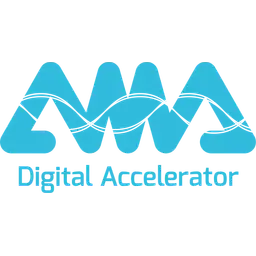- SEO
SEO Agency
Take advantage of the first traffic acquisition lever by entrusting your SEO to a digital agency experienced in SEO. - SEA
SEA Agency
Grow your business quickly with paid search (SEA).
- Social Ads
Social ads
Optimize your social media advertising campaigns to improve your performance.TikTok adsGo viral with your ads on TikTok

- Agency
The agency
Keyweo was born from the desire to create an agency that meets the principles of transparency, trust, experience and performance.
- Blog
- Contact
Google Penguin
Home > SEO Agency > SEO Glossary > Google Penguin
Definition
The Google Penguin update had a major impact on the visibility of many websites after its release in April 2012. The update was aimed at the quality of websites, which meant that some benefited greatly, while others abruptly lost positions in the SERPs and therefore also traffic. What was known at the time as one of the first major updates, which took massive action against black-hat SEO strategies, is now commonplace with the Google Core Updates, which are published three to four times a year.

The most important facts
The world of complex Google algorithms can be very overwhelming at first. For this reason, here are the most important facts about the Google Penguin update at a glance:
- Rolled out in April 2012
- Mainly aimed at link profiles of websites
- Consequences were massive position and therefore traffic changes
- The effects of the consequences varied from language to language
- There were a total of four Penguin updates until 2016 and three data refreshes
- They have since been replaced by regular Google Core Updates
The history of the Google Penguin update
Anyone who still tries to get their website to the top of the search engine results with keyword stuffing, doorway pages or any other suspicious strategies will not be successful in the long term.
The reason for this is the Google updates that clean the SERP of webspam several times a year. These Google Core Updates can be traced back to the first updates that took measures against low-quality pages. One of the updates that had the biggest impact was the Google Penguin update, which was launched in 2012. This update mainly focused on unnatural link profiles that some websites had. But other factors also played a role.
Websites that owed their SEO success mainly to backlinks that were not created naturally lost a lot of traffic as a result of the update. After the first update in April 2012 and several data refreshes, the Google Penguin Update 2.0 followed in May of the following year. Two further Penguin updates followed until 2016, after which it was implemented in the algorithm, which still scans websites today and is responsible for positioning in the SERPs.
Natural versus unnatural link profile
Anyone who sees the intrusion figures after the updates will fear for their own website. But there’s no need to worry. If you know how to build a natural link profile and stay away from any suspicious link buying and selling platforms, you have a good chance of benefiting from updates. It’s important to know the difference.
Natural link profile
The way Google works is that it recognizes links placed from one website to another as a recommendation. It increases Google’s trust in the linked website and gives it more power in the SERP. The bigger and better known the linked website is, the stronger the link that the other website receives. So to get these powerful and quality links, the work of the website that wants to get the links is to publish high quality content in an illustrative way. This can then serve as a source for other websites. So if you invest your time in content creation, it will pay off in the long run.
Unnatural link profile
As you can imagine, building a natural link profile is a lot of work and takes a lot of time before it pays off. Over time, a market for link trading developed, which made it possible for websites to buy or trade powerful links without particularly high-quality content. The buyers of these links were thus incorrectly given the trust of Google, which subsequently paid off in good SERP positions and higher traffic.
The users of the search engine, on the other hand, benefited little from this, as they saw websites in the top positions that had many inbound links but were often of poor quality. Google subsequently responded to this breach of guidelines in 2012 with the Penguin update. It mainly focused on unnatural link profiles, which are recognizable as follows:
- Anchor texts: a common mistake made in netlinking is that anchor texts correspond exactly to the keyword for which the page ranks. If this happens frequently, Google recognizes this as webspam and penalizes it. Instead, anchor texts should be more natural, vary and tell the user more about the website being linked to.
- Off-topic content: If you, as a fashion online store, receive numerous links from cooking blogs, gardening magazines, casino sites etc., you will also make yourself suspect for the Google updates. Pages that link to yours should be closely related to the relevant topic. For the example of the fashion online store, this could be a fashion blog or a lifestyle magazine.
- Quantity: If a website generates numerous backlinks within a very short time, this can also lead to a penalty through updates. If we assume natural link building, these should be added gradually.
- Quality: The quality of the websites that link to another also plays a major role in the trustworthiness of a website. Websites that are only there to feed a large link network, have inferior, perhaps even foreign-language content and have little or no traffic are of very low quality. A website that receives links from such sources will fall in the radar of Google updates.
Tools such as ahrefs can help you to check your own link profile. Here you can find out how many referring domains you have, where these links come from, which anchor texts have been used and much more.
How do I recognize a penalty due to a Google update?
Algorithmic penalties that affect a website after an update are greatly feared. And for good reason. If the website loses visibility, this leads to a massive loss of traffic, which often has an impact on sales. But how do you recognize such a penalty?
After Google Penguin in 2012, we saw extreme changes in website traffic. Some positive, others negative. Google regularly publishes on its X account when new updates are released. If you run a website, you should always keep an eye on the latest posts on this account so that you are prepared for all updates and can react appropriately. If your website loses traffic after an update and does not get it back for a few days, you are most likely affected. You will then have to regain the trust of the search engine.
How do you recover from a penalty?
Once you have been penalized, you have to look for ways to regain Google’s trust. To do this, you need to scan your website for possible violations of the Google guidelines. With the first Google Penguin update, it was still very likely that the link profile would be affected. Since the automatic Google Core Updates, however, the content or technical errors on the website can also lead to penalties. Here are some examples of factors that Google treats unfavorably:
- Duplicate content: If content is simply copied from other websites, this will be noticed by Google’s robots and will result in a penalty. A text should also not appear more than once on a page. Make sure that you write each individual text as uniquely and qualitatively as possible.
- Keyword stuffing: If the texts on your website are only stuffed with keywords instead of providing users with high-quality results, Google will penalize this.
- Doorway pages: Another page that contains a redirect to the main page. These pages become a problem if the doorway page only contains content that was written exclusively for search engines and misleads users.
- Hidden text: White text on a white background is an example of hidden text. The Google robots are now intelligent enough to recognize this as a violation of the Google guidelines.
- Content spinning: This also results in low-quality content that is of little use to users and is quickly penalized by the search engine these days.
So be on your guard and stay away from any black-hat strategies. In addition to the updates that are published regularly, the Google team also looks at individual websites manually and can penalize them.
The most popular definitions
Web Accessibilty
Google algorithm
Crawler
Google EAT
Google Search Console
Crawl Budget
Google Pagerank
Voice search
URL
Google Penguin
Google filter
Search engine
Boost your Visibility
Do not hesitate to contact us for a free personalised quote
Notez ce page







